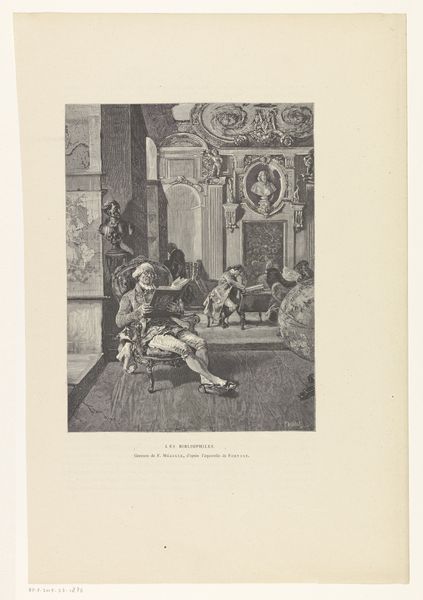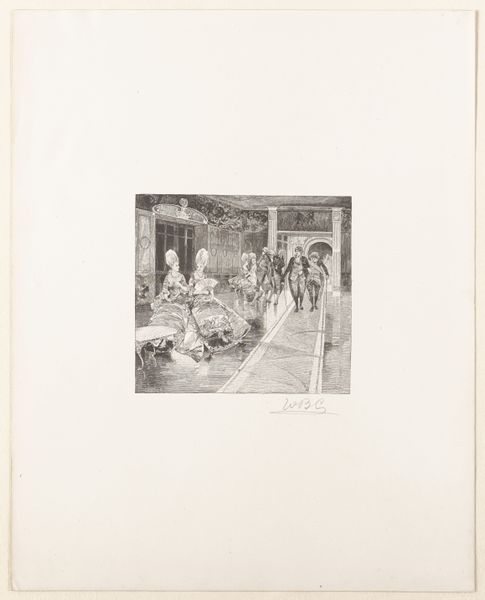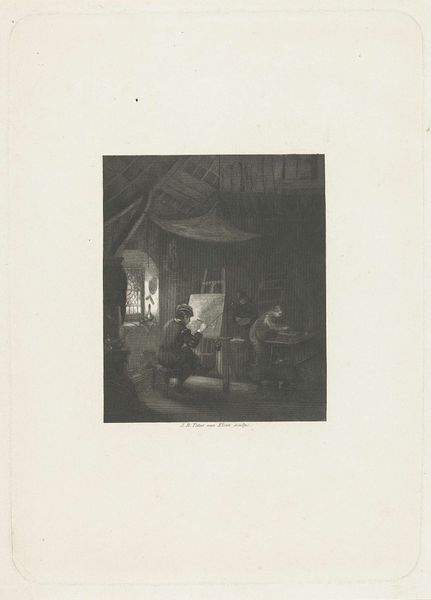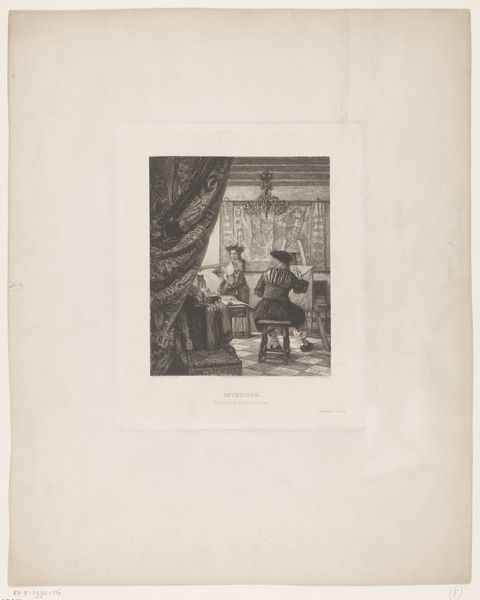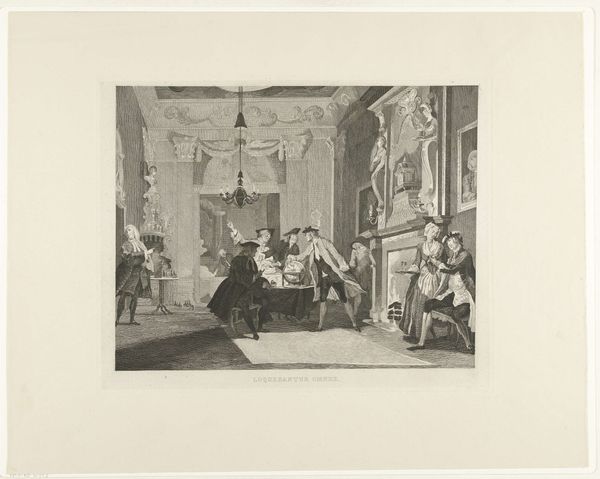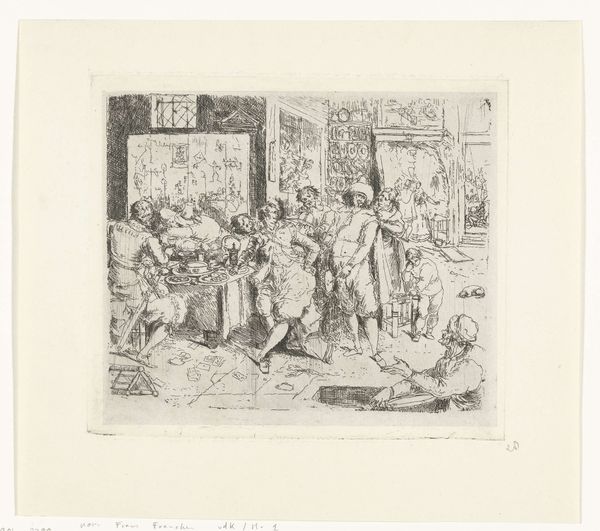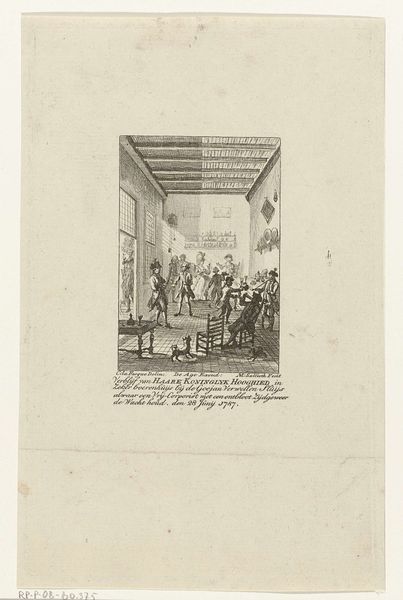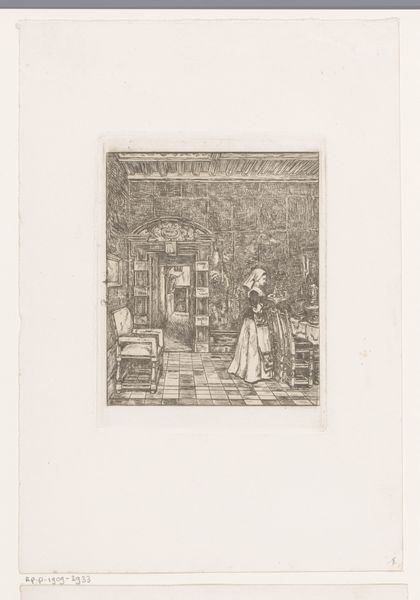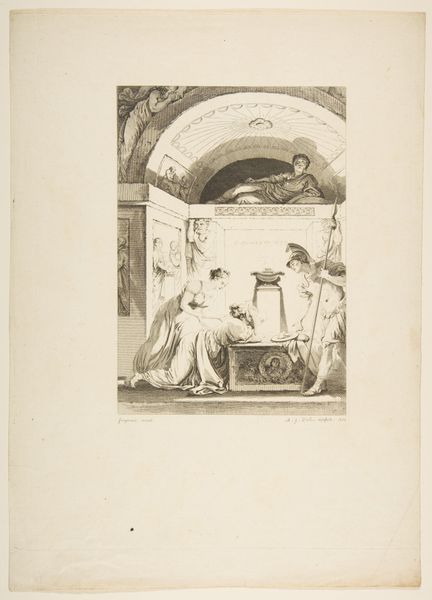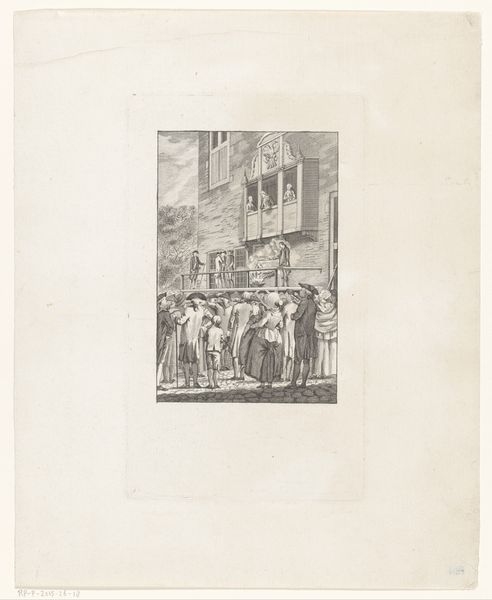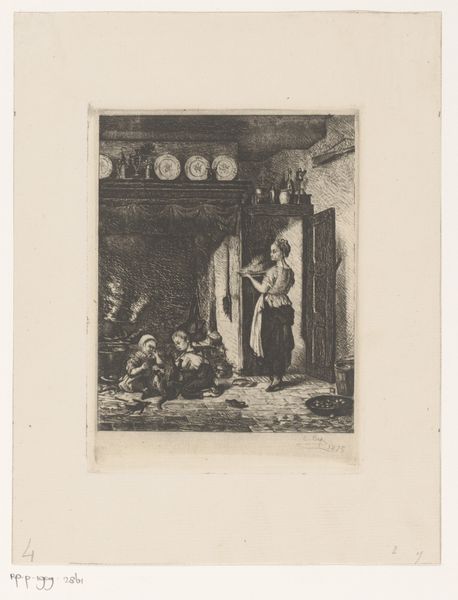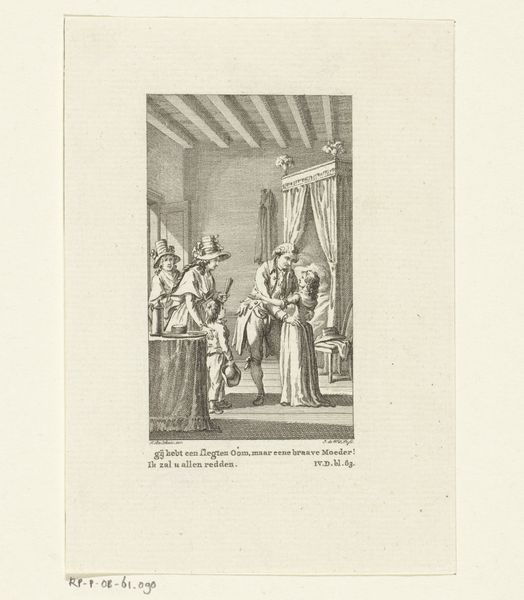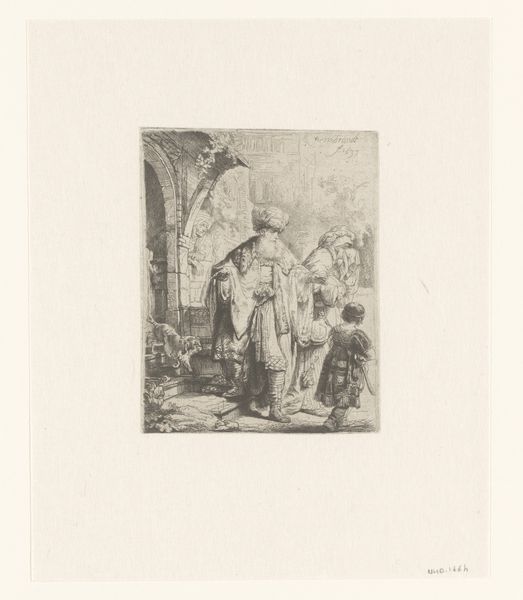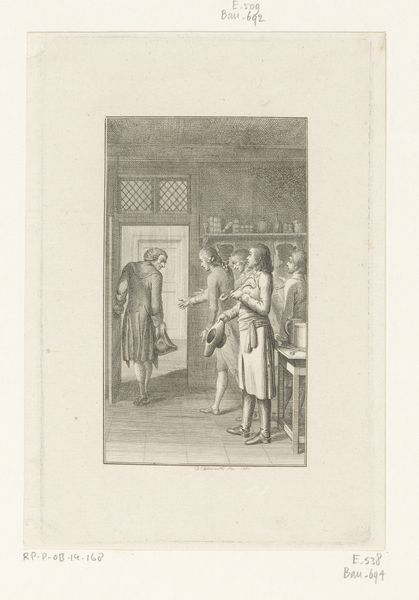
print, engraving
#
narrative-art
# print
#
old engraving style
#
figuration
#
ancient-mediterranean
#
genre-painting
#
history-painting
#
engraving
Dimensions: height 503 mm, width 331 mm
Copyright: Rijks Museum: Open Domain
Curator: This is "Egyptische goochelaar," or "Egyptian Magician," a print from the period 1849 to 1895 currently held here at the Rijksmuseum. Editor: My immediate impression is the artist's use of light and shadow; it's stark, theatrical almost, with the figure of the magician brightly lit against a more subtly rendered interior. Curator: The composition certainly guides the eye. Note how the verticality of the columns and the magician’s pose creates a strong axis. There is a deliberate geometry in the arrangement of figures. Editor: Yes, and that geometry serves a social function. I'm drawn to the contrast between the presumably wealthy onlookers, with their elaborate drapery and relaxed poses, and the relative lack of material shown with the magician. I wonder about the economy that enables this scene? What sort of power dynamics are at play here? Curator: A fascinating point. Focusing on form, the textures rendered in the engraving process – the smooth surfaces of the columns versus the more patterned rendering of the ceiling – indicate different material qualities, reflecting the architecture's complexity. Also, examine the artist’s commitment to realism, an important element within the context of genre and history painting. Editor: I appreciate the rendering, but I can’t help but consider the tools needed for this kind of meticulous engraving. The burin, the metal plate, the acid… It is labour-intensive and yet can also create copies that potentially challenge the exclusivity of visual art. Curator: I see what you mean about the potential of engraving and this particular image offers an engagement of the past—linking us to classical traditions while demonstrating evolving aesthetic sensibilities within the print medium. Editor: Absolutely, it is an intriguing work. The interplay between labor and luxury certainly gives us something to consider regarding societal frameworks back then, alongside the engraving process itself as part of this historical framework. Curator: Indeed. A study in contrasts that rewards both careful viewing and deeper reflection on its production and social context.
Comments
No comments
Be the first to comment and join the conversation on the ultimate creative platform.
